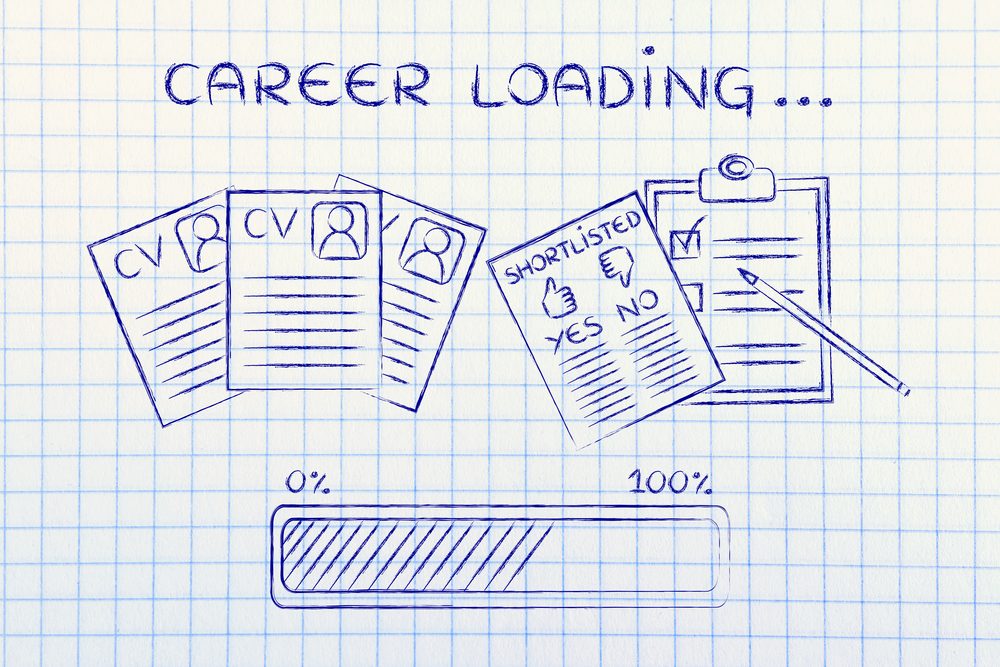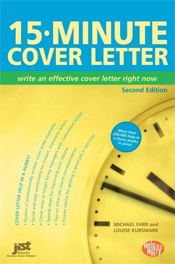
 Jobacle recently caught up with Louise Kursmark, co-author of the recently released book 15-Minute Cover Letter, Second Edition. She offers effective strategies for scoring face-to-face interviews and answers several of our questions.
Jobacle recently caught up with Louise Kursmark, co-author of the recently released book 15-Minute Cover Letter, Second Edition. She offers effective strategies for scoring face-to-face interviews and answers several of our questions.
Jobacle: If you had to assign a % to the importance of a good cover letter, what would it be?
Louise Kursmark: It’s hard to be absolute, because some recruiters and employers love, read, save, and share cover letters while others completely ignore them. Consider your cover letter an added opportunity to convince your audience that you have what they are looking for. It would be foolish to pass up the chance to capture favorable attention.
Q: Is there a recommended number of words one should use in a cover letter?
LK: The fewest possible to get the message across! Rather than a word count, use these guidelines to construct your letter:
1) Opening: Get to the point – tell them why you’re writing – in an interesting way if possible. (But it’s more important to be clear than clever.)
Middle: Tell them the value you offer. It’s not about you – it’s what you can do for them. Give a couple of brief highlights of your most notable accomplishments as relevant to the position, company, industry, and any specific challenges you know they are facing. Do NOT tell them your entire career history or all of your qualifications, and don’t repeat items word-for-word from your resume.
Closing: Ask for a meeting. Tell them you’ll follow up …and do so!
Q: Is it ever OK to send a cover letter that is not targeted to an individual? What if you’ve exhausted every avenue and have come up empty but still want to contact the organization?
LK: Of course it’s OK, although it’s less desirable because you don’t have an avenue for follow-up. Some companies make it extremely difficult to find out just who your letter should go to. But I consider a blind cover letter a last resort. First be sure you are using the telephone, tapping into your network, and consulting resource materials to find the name of a hiring authority for your area of the business.
Q: Should a cover letter match the look and feel of your resume?
LK: Absolutely, in their printed format. However, many cover letters these days are sent by email. I recommend placing your cover letter in the body of the email and attaching your resume as a Word document. You won’t have the same look-and-feel with this method, but it’s what employers prefer. But do be sure that the language, style, and messages are congruent.
Q: What’s one piece of advice that you’ve uncovered after the book went to press that you’d like to add as an addendum?
LK: It’s more important than ever to get your messages across QUICKLY. We’ve learned from Twitter that you can say a lot in 140 characters! Trim your letters down to the core message to be sure they are read and not passed over.
More advice from Louise…
“Cover letters offer a golden opportunity to link your set of skills, experience, talents and interests with a particular company or job. They are your formal introduction to people who can be influential in your job search, and they prepare your readers for all the details, experiences and accomplishments highlighted on your resume,” says Ms. Kursmark.
Instead, consider the following tips. According to Kursmark, these actions are effective strategies for scoring face-to-face interviews.
– Pack your P.S. with a punch. Most people immediately jump to the P.S. portion of a letter and read it again after finishing the rest. With a P.S., you can close your letter on a particularly positive and powerful note. To do so, be sure the P.S. contains information valuable to the employer. You might mention how a skill or experience of yours relates to one of the employer’s current goals. You might also congratulate the reader on an achievement or media coverage.
– Write to someone in particular. Avoid sending a letter “To whom it may concern.” If you don’t know the name of the person who will receive your letter, try searching Google or LinkedIn to uncover the name of the appropriate hiring manager or a contact in the human resources department.
– “Drop names” to make an impact. One of the most compelling ways to begin the letter is to mention the name of a person who referred you. If don’t know someone connected to the employer, consider referencing an interview you might have seen or read about that featured quotes from someone employed at the organization.
– Refer to your resume, but don’t repeat it word-for-word. Your letter should expand on the results, skills and success stories that are in your resume. Be sure to add more details about these points or blend two or three accomplishments from your resume into one powerful story in your letter.
Leave a Reply